Architecture
Many ancient standing stone monuments were erected during the prehistoric period, amongst the best known are Stonehenge, Devil's Arrows, Rudston Monolith and Castlerigg.[148] With the introduction of Ancient Roman architecture there was a development of basilicas, baths, amphitheaters, triumphal arches, villas, Roman temples, Roman roads, Roman forts, stockades and aqueducts.[149] It was the Romans who founded the first cities and towns such as London, Bath, York, Chester and St Albans. Perhaps the best known example isHadrian's Wall stretching right across northern England.[149] Another well preserved example is the Roman Baths at Bath, Somerset.[149] Early Medieval architecture's secular buildings were simple constructions mainly using timber with thatch for roofing. Ecclesiastical architecture ranged from a synthesis of Hiberno—Saxonmonasticism,[150][151] to Early Christian basilica and architecture characterised by pilaster-strips, blank arcading, baluster shafts and triangular headed openings. After the Norman conquest in 1066 various Castles in England were created so law lords could uphold their authority and in the north to protect from invasion. Some of the best known medieval castles include the Tower of London, Warwick Castle, Durham Castle and Windsor Castle amongst others.[152]
Throughout the Plantagenet era an English Gothic architecture flourished—the medieval cathedrals such as Canterbury Cathedral, Westminster Abbeyand York Minster are prime examples.[152] Expanding on the Norman base there was also castles,palaces, great houses, universities and parish churches. Medieval architecture was completed with the 16th century Tudor style; the four-centred arch, now known as the Tudor arch, was a defining feature as werewattle and daub houses domestically. In the aftermath of the Renaissance a form of architecture echoing classical antiquity, synthesised with Christianity appeared—the English Baroque style, architectChristopher Wren was particularly championed. Georgian architecture followed in a more refined style, evoking a simple Palladian form; the Royal Crescent at Bath is one of the best examples of this. With the emergence of romanticism during Victorian period, a Gothic Revival was launched—in addition to this around the same time the Industrial Revolution paved the way for buildings such as The Crystal Palace. Since the 1930s various modernistforms have appeared whose reception is often controversial, though traditionalist resistance movements continue with support in high places.[note 6]
Folklore
The origin of much folklore in the area which is now called England pre-dates the Anglo-Saxon invasions.[153][154] The Matter of Britain contains much folklore, which is shared with the British Isles in general and Welsh mythology in particular. Most famous of all are the stories of Arthurian legendsurrounding King Arthur, Camelot, Excalibur, Merlin and the Knights of the Round Table like Lancelot andTristan.[155] These stories are most centrally brought together within Geoffrey of Monmouth's Historia Regum Britanniae. Another early figure from Brythonic times is King Cole based on a historical figure who ruled much of what would become northern England in the post-Roman period. Pixies, giants, elfs, ogres,bogeymen, trolls, hobgoblins and dwarf are mythological creatures which run through many stories. Brutus of Troy a legendary descendent of Aeneas is said to have founded London as a "New Troy".[156] Other legends developed after the Norman invasion; Robin Hood is perhaps the best known, he "stole from the rich to give to the poor", his Merry Men, Sherwood Forest and the Sheriff of Nottingham feature prominently.[157]
Many folkish figures are based on semi-historical people whose story has been passed down centuries;Lady Godiva for instance was said to have rode naked on horseback through Coventry, Hereward the Wake was a heroic English figure resisting the Norman invasion, Herne the Hunter is an equestrianghost associated with Windsor Forest and Great Park and Mother Shipton is the archetypal witch.[158]On 5 November people make bonfires, set off fireworks and eat toffee apples in commemoration of theGunpowder Plot centred around Guy Fawkes. The chivalrous bandit is a reacurring character such asDick Turpin, while Blackbeard is the archetypal pirate. There are various national folk traditions such asMorris dancing, Maypole dancing, Rapper sword in the North East, Long Sword dance in Yorkshire,Mummers Plays, bottle-kicking in Leicestershire and cheese-rolling at Cooper's Hill.[159] There is no official national costume, but a few are well established such as the Pearly Kings and Queensassociated with cockneys, the Royal Guard and Beefeaters.[160]
Cuisine
Since the Early Modern Period the food of England has historically been characterised by its simplicity of approach such as meat and two veg, honesty of flavour, and a reliance on the high quality of natural produce. During the Middle Ages and through the Renaissance period, English cuisine enjoyed an excellent reputation, though a decline began during the Industrial Revolution with the move away from the land and increasing urbanisation of the populace. The French sometimes referred to English people as les rosbifs, as a stereotype to suggest English food is crude or unsophisticated. However, the cuisine of England has recently had a more positive revival with the critics, with some good ratings in Restaurant's best restaurant in the world charts.[161] An early book of English recipes is the Forme of Cury from the royal court ofRichard II.[162]
Traditional examples of English food include the Sunday roast; featuring aroasted joint, usually beef, lamb or chicken, served with assorted boiled vegetables, Yorkshire pudding andgravy.[163] Other prominent meals include fish and chips and the full English breakfast—consisting of bacon, grilled tomatoes, fried bread, black pudding, baked beans, fried mushrooms, sausages and eggs. Variousmeat pies are consumed such as steak and kidney pie, shepherd's pie, cottage pie, Cornish pasty and pork pie, the later of which is consumed cold.[163] Sausages are commonly eaten, either as bangers and mash ortoad in the hole. Lancashire hotpot is a well known stew. Some of the most popular cheeses are Cheddarand Wensleydale. Many Anglo-Indian hybrid dishes, curries, have been created such as chicken tikka masala and balti. Sweet English dishes include apple pie, mince pies, spotted dick, scones, Eccles cakes,custard and sticky toffee pudding. Common drinks include tea, which became far more widely drunk due toCatherine of Braganza,[164] while alcoholic drinks include wines and English beers, usually drank in public houses such as bitter, mild, stoutand brown ale.[165]
Visual arts
The earliest known examples are the prehistoric rock and cave art pieces, most prominent in North Yorkshire, Northumberland and Cumbria, but also feature further south, for example at Creswell Crags.[166] With the arrival of Roman culture in the 1st century, various forms of art utilising statues, busts, glasswork and mosaics were the norm. There are numerous surviving artefacts, such as those atLullingstone and Aldborough.[167] During the Early Middle Ages the style was sculpted crosses and ivories, manuscript painting, gold and enamel jewellery, demonstrating a love of intricate, interwoven designs. Some of these blended Gaelic and Anglian styles, such as the Lindisfarne Gospels andVespasian Psalter.[168] Later Gothic art was popular at Winchester and Canterbury, examples survive such as Benedictional of St. Æthelwold and Luttrell Psalter.[169]
The Tudor era saw prominent artists as part of their court, portrait painting which would remain an enduring part of English art, was boosted by German Hans Holbein, natives such as Nicholas Hilliardbuilt on this.[169] Under the Stuarts, Continental artists were influential especially the Flemish, examples from the period include—Anthony van Dyck, Peter Lely, Godfrey Kneller and William Dobson.[169] The 18th century was a time of significance with the founding of the Royal Academy, a classicism based on the High Renaissance prevailed—Thomas Gainsborough and Joshua Reynolds became two of England's most treasured artists.[169] The Norwich School continued the landscape tradition, while the Pre-Raphaelite Brotherhood with their vivid and detailed style revived the Early Renaissance style—Holman Hunt, Dante Gabriel Rossetti and John Everett Millais were leaders.[169] Prominent amongst twentieth century artists was Henry Moore, regarded as the voice of British sculpture, and of British modernism in general.
Literature, poetry and philosophy
Early authors wrote in Latin such as Bede and Alcuin.[170] While the period of Old English literature provided the epic poem Beowulf, along with Christian writings such as Judith, Cædmon's Hymn and saintly hagiographies.[170]The best known secular prose is the Anglo-Saxon Chronicle. Following the Norman conquest Latin continued amongst the educated classes, as well as an Anglo-Norman literature. Middle English literature emerged withGeoffrey Chaucer author of The Canterbury Tales, along with Gower, the Pearl Poet and Langland. Franciscans,William of Ockham and Roger Bacon were major philosophers of the Middle Ages. Julian of Norwich with herRevelations of Divine Love was a prominent Christian mystic. With the English Renaissance literature in the Early Modern English style appeared. William Shakespeare who authored the plays Hamlet, Romeo and Juliet,Macbeth and A Midsummer Night's Dream, remains one of the most championed authors in English literature.Marlowe, Spenser, Sydney, Kyd, Donne, Jonson are other giants of the Elizabethan age.[171] Francis Bacon andThomas Hobbes wrote on empiricism and materialism, including scientific method and social contract.[171] Filmerwrote on the Divine Right of Kings. Marvell was the best known poet of the Commonwealth, while John Miltonauthored Paradise Lost during the Restoration.
This royal throne of kings, this sceptred isle, this earth of majesty, this seat of Mars, this other Eden, demi-paradise; this fortress, built by nature for herself. This blessed plot, this earth, this realm, this England. |
Some of the most prominent philosophers from the Enlightenmentwere Locke, Paine, Johnson and Benthem. More radical elements were later countered by Edmund Burke who is regarded as the founder of conservatism. The poet Alexander Pope with his satirical verse became well regarded. The English played a significant role in romanticism—Coleridge, Byron, Keats, M Shelley, PB Shelley, Blake andWordsworth were major figures.[173] In response to the Industrial revolution, agrarian writers looked to find a way between liberty and tradition; Cobbett, Chesterton and Belloc were main exponents, while founder of guild socialism, Penty and cooperative movement advocate Cole are somewhat related.[174] Empiricism continued through Mill and Russell, while Williams was involved in analytics. Authors from around the time of the Victorian era include Dickens, Brontë sisters, Austen, Kipling,Wells, and Underhill.[175] Since then England has continued to produce novelists such as C. S. Lewis, Orwell, Blyton, Christie, Tolkien author of The Lord of the Rings and JK Rowling author of Harry Potter.[176]
Performing arts
 |
| ||||||||||||
| Problems listening to these files? See media help. | |||||||||||||
The traditional folk music of England is centuries old and has contributed to several genres prominently; mostly sea shanties, jigs, hornpipes and dance music. It has its own distinct variations and regional peculiarities. Wynkyn de Worde printed ballads of Robin Hood from the 16th century are an important artefact, as are John Playford's The Dancing Master and Robert Harley's Roxburghe Ballads collections.[177] Some of the best known songs are The Good Old Way, Pastime with Good Company, Maggie May and Spanish Ladies amongst others. Manynursery rhymes are of English origin such as Twinkle Twinkle Little Star, Roses are red, Jack and Jill, Here We Go Round the Mulberry Bush and Humpty Dumpty.[178] Early English composers in classical music include Renaissance artists Thomas Tallis and William Byrd, followed up by Henry Purcell from the Baroque period. German-born George Frideric Handelbecame a British subject[179] and spent most of his composing life in London, where he created some of the most well-known and frequently-performed works of classical music, The Messiah, Water Music, and Music for the Royal Fireworks. There was a revival in the profile of composers from England in the 20th century with Edward Elgar, Gustav Holst, Ralph Vaughan Williams, Frederick Delius and others.[180] Modern English composers include Michael Nyman, best known for his scores for films by Peter Greenaway and for The Piano.
In the field of popular music many English bands and solo artists have been cited as the most influential and best-selling musicians of all time. Acts such as The Beatles, Led Zeppelin, Pink Floyd, Elton John, Queen, Rod Stewart and The Rolling Stones are among the highest selling recording artists in the world.[181] Many musical genres have origins or strong associations with England, such as British invasion, hard rock,glam rock, heavy metal, mod, britpop, drum and bass, progressive rock, punk rock, indie rock, gothic rock, shoegazing, acid house, UK garage, trip hop and dubstep.[182] Large outdoor music festivals in the summer and autumn are popular, such as Glastonbury, V Festival,Reading and Leeds Festivals. The most prominent opera house in England is the Royal Opera House at Covent Gardens.[183] A major cultural event held annually is The Proms, a season of orchestral classical music concerts held at the Royal Albert Hall.[183]
Classical ballet in England is performed by of one of the world's foremost ballet companies, The Royal Ballet, its reputation built on two prominent figures of twentieth century dance, prima ballerina Margot Fonteyn and choreographer Frederick Ashton.
Museums, libraries and galleries
English Heritage is a governmental body with a broad remit of managing the historic sites, artefacts and environments of England. It is currently sponsored by the Department for Culture, Media and Sport. The charity National Trust for Places of Historic Interest or Natural Beauty holds a contrasting role. Seventeen of the twenty-five United Kingdom UNESCO World Heritage Sites fall within England. Some of the best known of these include; Hadrian's Wall, Stonehenge, Avebury and Associated Sites, Tower of London, Jurassic Coast, Saltaire, Ironbridge Gorge, Studley Royal Park and various others.[184] There are many museums in England, but the most notable of all is London's British Museum. Its collections, which number more than seven million objects,[185] are amongst the largest and most comprehensive in the world and originate from all continents, illustrating and documenting the story of human culture from its beginning to the present. TheBritish Library in London is the national library and is one of the world's largest research libraries, holding over 150 million items in all known languages and formats; including around 25 million books.[186] The most senior art gallery is the National Gallery in Trafalgar Square, which houses a collection of over 2,300 paintings dating from the mid-13th century to 1900.[187] The Tate galleries house the national collections of British and international modern art; it also hosts the famously controversial Turner Prize.[188]
Sports
England has a very strong sporting heritage and codified many sports in the 19th century which are now played around the world. Sports originating in England include association football,[190] cricket, rugby union, rugby league, tennis, badminton, squash,[191] rounders,[192] hockey, boxing, snooker, billiards,curling, darts, table tennis, bowls, netball, thoroughbred horseracing and fox hunting. It has helped the development of sailing and Formula One. Football is the most popular of these sports. The England national football team, who play at Wembley Stadium, won the FIFA World Cup in 1966, the year the country hosted the competition. At club level England is recognised by FIFA as the birth-place of club football, due to Sheffield FC founded in 1857 being the oldest club.[190] The Football Association is the oldest of its kind, FA Cup and The Football League were the first cup and league competitions respectively. In the modern day the Premier League is the world's most lucrative football league[193] and amongst the elite.[194] The European Cup has been won by Liverpool, Manchester United, Nottingham Forest and Aston Villa, while Arsenal,Chelsea and Leeds United have reached the final.[195]
The England national rugby union team won the 2003 Rugby World Cup, the country was one of the host nations of the competition in the 1991 Rugby World Cup and is set to host the 2015 Rugby World Cup.[196]The top level of club participation is the English Premiership. Leicester Tigers, London Wasps, Bath Rugbyand Northampton Saints have had success in the Europe-wide Heineken Cup. In another form of the sport—rugby league which was born in Huddersfield in 1898, the England national rugby league team are ranked third in the world and first in Europe. Since 2008 England has become a full test nation in lieu of the Great Britain national rugby league team, which won three World Cups but is now retired. At a domestic level, clubs previously played in the Rugby League Championship, now known as the Super League. Some of the most successful clubs include Wigan Warriors, St Helens, Leeds Rhinos and Huddersfield Giants; the former three have all won the World Club Challenge previously. In tennis the Wimbledon Championships are the oldest tennis tournament in the world and is widely considered the most prestigious.[197][198]
The England cricket team is a composite England and Wales team—cricket is regarded as England'snational sport. One of the game's top rivalries is The Ashes test games between England and Australia, competed since 1882, England has won it 92 times. England has hosted four Cricket World Cups and hosted the ICC World Twenty20 in 2009. At domestic level the County Championship is played where Yorkshire are by far the most successful club, ahead of Sussex and Middlesex. William Penny Brookes was prominent in organising the format for the modern Olympic Games—London has hosted the Summer Olympics in 1908 and 1948, as well as being set to host in 2012. The Commonwealth Games held every four years is competed in by England. Sport England is the governing body responsible for distributing funds and providing strategic guidance for sporting activity in England. A Grand Prix is usually held at Silverstone but will be moved to Donington.[199]
National symbols
The national flag of England, known as St. George's Cross, has been the national flag since the 13th century. Originally the flag was used by the maritime state the Republic of Genoa. The English monarch paid a tribute to theDoge of Genoa from 1190 onwards, so that English ships could fly the flag as a means of protection when entering the Mediterranean. A red cross acted as a symbol for many Crusaders in the 12th and 13th centuries. It became associated with Saint George, along with countries and cities, which claimed him as their patron saint and used his cross as a banner.[200] Since 1606 the St George's Cross has formed part of the design of the Union Flag, a Pan-British flag designed by King James I.[145]
There are numerous other symbols and symbolic artefacts, both official and unofficial, including the Tudor rose, the nation's floral emblem, the White Dragonand the Three Lions featured on the nation's coat of arms. The Tudor rose was adopted as a national emblem of England around the time of the Wars of the Roses as a symbol of peace.[201] It is a syncretic symbol in that it merged the white rose of the Yorkists and the red rose of theLancastrians—cadet branches of the Plantagenets who went to war over control of the royal house. It is also known as the Rose of England.[202] The oak tree is a symbol of England, representing strength and endurance. The term Royal Oak is used to denote the escape of King Charles II from the grasps of the parliamentarians after his father's execution; he hid in an oak tree to avoid detection before making it safely into exile.
The national coat of arms of England, featuring three lions dates back to its adoption by Richard the Lionheartfrom 1198–1340. They are described as gules, three lions passant guardant or and provide one of the most prominent symbols of England; it is similar to the traditional arms of Normandy. England does not have an official designated national anthem, as the United Kingdom as a whole has God Save the Queen. However, the following are often considered unofficial English national anthems: Jerusalem, Land of Hope and Glory(used for England during the 2002 Commonwealth Games),[203] and I Vow to Thee, My Country. England's National Day is St George's Day, asSaint George is the patron saint of England, it is held annually on 23 April.[204]

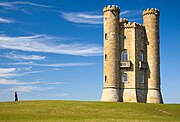


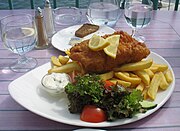
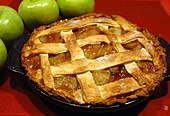
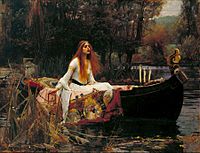
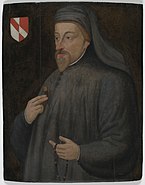
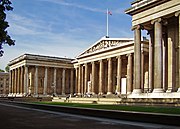
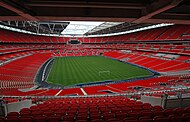






0 comments:
Post a Comment